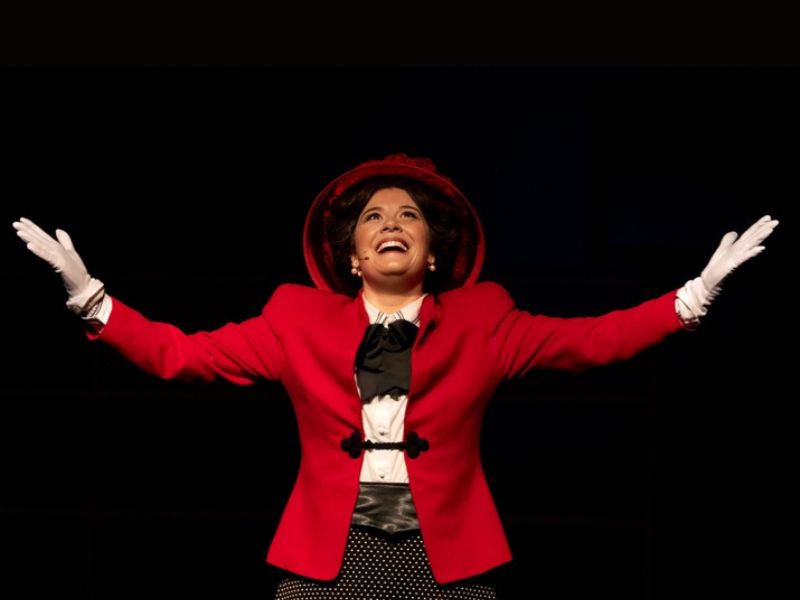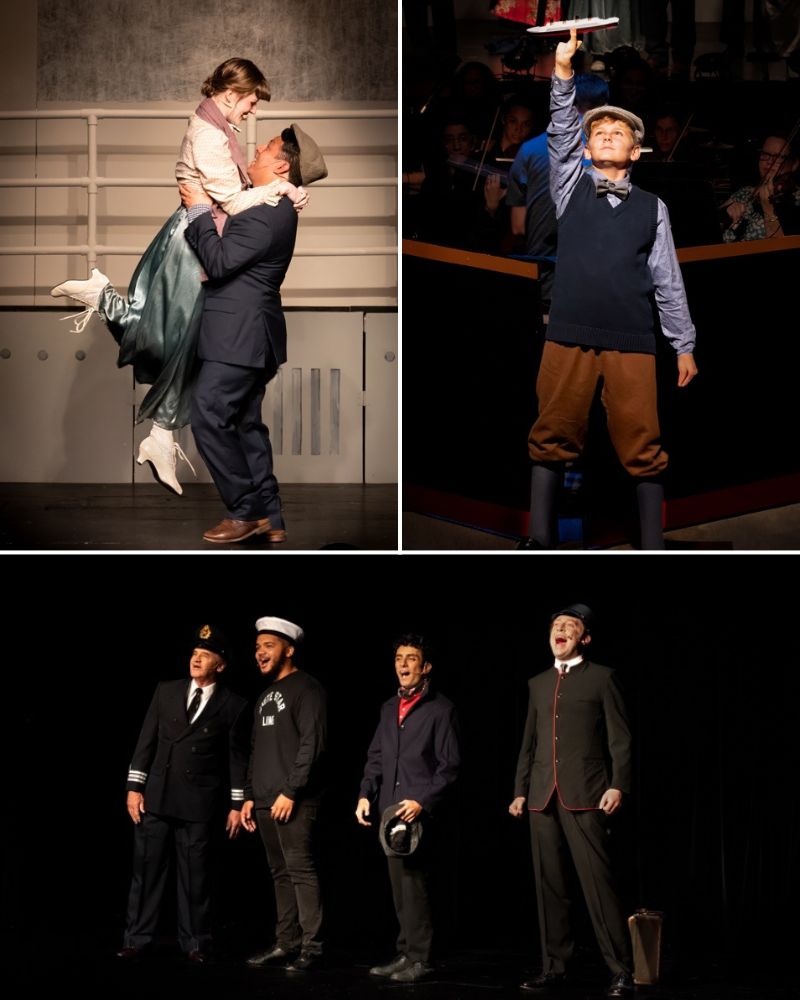1912, it turns out, was a very good year in which to set an award-winning musical. That was the year in which Henry Higgins and Eliza Doolittle let it rain in Spain in My Fair Lady and Harold Hill bamboozled the residents of River City, Iowa, in The Music Man. And it was in that year that the R.M.S. Titanic had its notoriously fatal encounter with an iceberg, the subject of Titanic: The Musical. The 1997 show, by Broadway veterans Peter Stone (book) and Maury Yeston (music and lyrics), won a Best Musical Tony, though it was quickly overshadowed by James Cameron’s epic film on the subject, released in the same year.
In its current production by the Good Shepherd Players (GSP), the music is the star. In an era of slimmed-down bands for musicals, a 27-piece orchestra counts as a rare luxury. Under the fine direction of Colin Taylor, the orchestra gives a full, rich, concert-quality performance of Yeston’s sumptuous score, providing lucid underscoring of many of the show’s scenes.

The quality of the singing by GSP’s exceptionally large cast matches that of the orchestra. Numbers like “The Launching,” “God Lift Me Up,” and “Godspeed Titanic” are gorgeous set pieces that would do credit to any first-rate choral organization. Throughout the show, cast members in various combinations provide one well-sung musical scene after another that illuminates characters and their reactions to their situation.
It is hard to think of any musical that is so completely an ensemble show as is this Titanic. There are no long character arcs that focus attention on a handful of leads. Rather, Stone and Yeston give us vignettes of a wide variety of officers, crew and staff, and passengers of the ship.
While no one disappoints, and many individuals and groups have notable moments, there are several performers who merit special mention. Chris Gray, as ship designer Thomas Andrews, in addition to bookending the saga of the great ship in his powerhouse tenor voice with “In Every Age” and “Mr. Andrews’ Vision,” is both a visionary and realist. He is the primary vehicle for the writers’ theme of the simultaneous excitement and hubris of a cutting-edge technical achievement.
Matching Gray as a standout tenor is Shakil Azizi as Barrett, an ultimately heroic stoker, whose “The Night Was Alive,” with radio operator Harold Bride (Richard Jacobson), was for me the standout small-scale scene of the evening. Displaying arrogance that, by pressuring the pliable Captain E.J. Smith (Kevin McCormack) to recklessly increase the ship’s speed, puts the ship on its course to disaster, J. Bruce Ismay (Chris Dockins), head of the White Star Line, is the villain of the piece.

The show properly makes much of the class distinctions among the passengers, affecting not only their onboard quality of life but their chances of surviving the sinking. The wealthy first-class passengers have a jolly time in such numbers as “What a Remarkable Age” and “Doing the Latest Rag,” which sometimes have a bit of a Gilbert and Sullivan flavor.
It is through the women that the class distinctions are brought most vividly to life. Third-class passenger Kate McGowan (Lizzie Bartlett) exemplifies the hope and grit of immigrants in their seeking a better life in America. Like Bartlett a fine soprano, Shelby Young’s Lady Caroline Neville is in second class, leaving her more affluent background in the UK to marry her lover. Meanwhile, another second-class passenger, aspiring social climber Alice Beane (Rebecca Roberts), the show’s most comic character, goes to great lengths to hobnob with the rich in first class.
With a very large cast on a modest-size church hall stage, director Nancy Lavellee’s task is often less blocking, in the usual sense, than traffic management. This is accomplished as efficiently as can be expected under the circumstances, with larger scenes often being done in a stand-and-sing mode. From my point of view, that’s not a problem. Titanic: The Musical, going back to its original 1997 production (the touring version of which I saw at the Kennedy Center), sometimes feels like a Broadway show that longs to be an oratorio. When the music is this good, and performed this well, extraneous movement could detract from its impact.
GSP’s set is a simple affair, with an upstage platform that serves principally as the ship’s bridge. There are occasional projections with photos or video clips of the ship, but given the small upstage screen, and the considerable separation between the stage and the audience seating area (necessary to make room for the orchestra), they are difficult to see. In the sound design (John Przybylski, Meg Przybylski, and Elle Ames), most of the performers are miked and can consistently be heard above the orchestra, though there are times when their words do not come across clearly in the house.
Donna Sisson and Jennifer Caldwell succeed in their massive task of creating and fitting period-appropriate costumes for the 50-plus performers. Most are fairly subdued, among which the red outfits for Barrett and Alice Bean stand out by contrast.
The passengers who will survive leave for the lifeboats partway through the second act, leaving those stranded on the foundering ship to contemplate their approaching end and what their last moments mean to them. Isadore Strauss (the then-owner of Macy’s) and his wife, Ida (Bill Robinson and Margaret McGarry), have the sweetest of these moments, in the tender “Still.” There’s no suspense here: the passengers as well as the audience know what is to come. But the quiet and somber tone is an appropriate conclusion to the sadness attending the death of the largest moving object in the world.
Running Time: Two hours and 30 minutes, including one intermission.
Titanic: The Musical plays through November 12, 2023, presented by Good Shepherd Players performing at Church of the Good Shepherd, 9350 Braddock Road, Burke, VA. Tickets, priced at $20 ($10 for students), are available online.
The program for Titanic: The Musical is online here.





Correction: Sound Designers are John Przybylski, Meg Przybylski, and Elle Ames. Elle Ames is also the show’s Assistant Director.